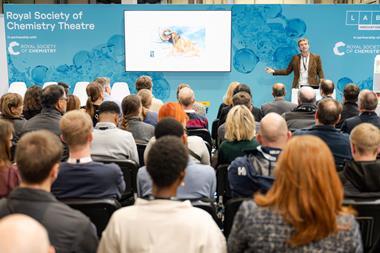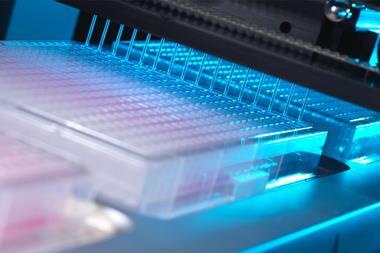How green polymer specialists Novomer and biotech startup SynbiCite optimised industrial and biotech processes using design of experiment software from JMP
It used to be said that if you were first to market with the right product at the right time, you could expect to take a 60% share of the market. Today, that figure is probably closer to 80% with perhaps 15% going to second place and a slim 5% of the total share spread between the rest of the field. The figures are anecdotal, but the pressure to deliver market share is real for R&D teams across industries trying to grow and capture more market share by bringing new and better products to customers faster than their competitors.
For startups working in a high-risk field like biotech, that pressure is magnified by the need to secure funding and meet the requirements and timescales set by investors. While the startup culture may promise openness and the ‘freedom to fail’, this should not be mistaken for freedom to relax stringency or disregard the data. Discipline and scientific rigour are essential for keeping the mission – and its funding – on track.
Biotech startups may be motivated by the opportunity to make genuine breakthroughs and deliver life-changing products but, as with any R&D effort, there is likely to be more work than time available, resources may be stretched, and outcomes and timeframes can be unpredictable. This is where design of experiments (DoE) can help startups deliver results quickly and demonstrate the reliability, scalability and accountability needed to secure and maintain investment.
Growing more efficient processes with DoE
Novomer, a green polymers company, used DoE to streamline the development of its proprietary catalyst technology. Developed at Cornell University in New York State, US, Novomer’s technology facilitates the reaction of petroleum compounds with carbon dioxide or carbon monoxide to form plastics used in packaging and coatings. With limited resources – about a dozen chemists – and the need to push forward multiple product efforts, Novomer’s use of DoE meant it was able to screen different reaction conditions in a very logical way, providing a starting point for optimisation. DoE helped improve the team’s ability to reproduce its process and guide its research priorities.
Just a few years after its formation, the company received a $20.6 million (£15.6 million) grant from the US Department of Energy to design, construct and test materials at pilot-scale in advance of broad commercialisation and was recognised as one of the 50 most innovative companies by Massachusetts Institute of Technology, Massachusetts, US. Novomer continues to make strides in developing environmentally friendly applications that meet or surpass industry standards, and that are competitively priced – with significant investment from a broad range of backers keen to support its efforts.
Building a framework for statistical integration
An increase in startup activity is driving much of the innovation in synthetic biology, creating new products and services with industrial, technology and biomedical applications. Imperial College London’s (ICL) SynbiCite was established in 2013 with a £28 million commitment from the UK government – and private and academic partners – and is the UK’s centre for commercialisation of synthetic biology.
Confidence in the data and its rigour allows you to convince others of what is real
Stephen Chambers
Former chief executive of SynbiCite and current Royal Society Entrepreneur in Residence at ICL Stephen Chambers is a keen proponent of DoE but he recognises that not all scientists are knowledgeable about – or interested in – robust statistical analysis. ‘When you introduce [statistics] into a biological setting, there’s an initial resistance to it,’ he explains. ‘They don’t like the constraints of DoE. But when you see the results, they start buying in,’ he says.
To facilitate consistent quality and success – and in some cases, regulatory approval – well-designed and reproducible experiments are key. ‘It’s all about having confidence in the data and the rigour of that data so that you can present to other people and convince them that what we talk about is real,’ says Chambers. With the right tools to support DoE, scientists can start visualising their experiments, bringing their ideas to life and showing investors their true potential.
The London DNA Foundry is at the core of SynbiCite’s facilities hub. It provides a suite of state-of-the-art robotic equipment enabling automated end-to-end design, construction and validation of complex genetic systems, which allows SynbiCite’s partners to prototype new biologically based chemicals, drugs and materials. Integrating statistical techniques like DoE directly into the design of the robotics and the systems that support them has lowered the threshold of knowledge required to use these analyses and helped scientists learn statistics while they conduct their research.
Using DoE, researchers can evaluate multiple parameters in the same experiment, speeding up the research process and generating consistent, high-quality data. Combining DoE with robotics releases researchers from the burden of managing mundane, repetitive tasks, enabling them to focus on more important tasks like interpretation and modelling.
Translating research into commercial opportunities
By helping organisations make better decisions faster and meet project milestones more predictably, DoE enables startups to reaffirm their original mission and stay focused on their goals. Robust statistical analysis incorporating DoE can help reduce the number of experiments that need to be conducted while delivering results more quickly – essential for speeding up time to market and demonstrating a return on investment.
Join JMP for a discussion about the power of using smart trial and error to speed innovation, achieve faster, more predictable cycles and save time.

Register for the upcoming livestream seminar Smart trial and error for rapid innovation to learn how to put cutting-edge trial and error to work at your organisation.
The seminar’s keynote will be from JMP’s principal research fellow Bradley Jones.
19 March 2020 1000 – 1200
Babraham Research Campus
Cambridge, UK or online


















No comments yet